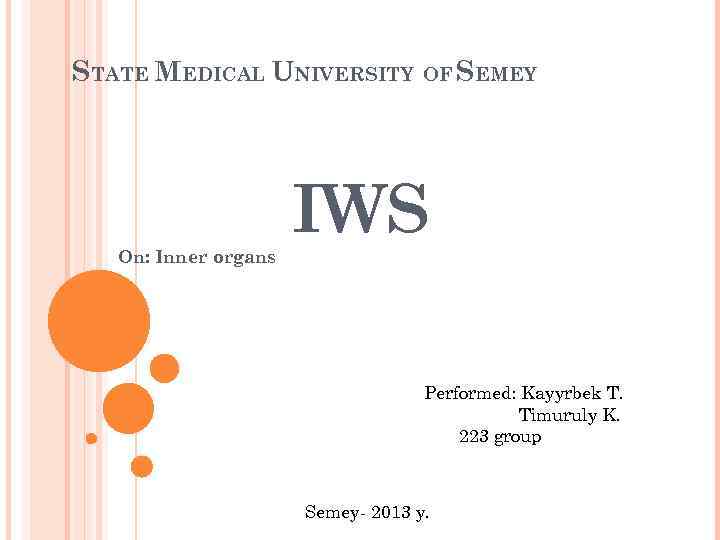 STATE MEDICAL UNIVERSITY OF SEMEY On: Inner organs IWS Performed: Kayyrbek T. Timuruly K. 223 group Semey- 2013 y.
STATE MEDICAL UNIVERSITY OF SEMEY On: Inner organs IWS Performed: Kayyrbek T. Timuruly K. 223 group Semey- 2013 y.
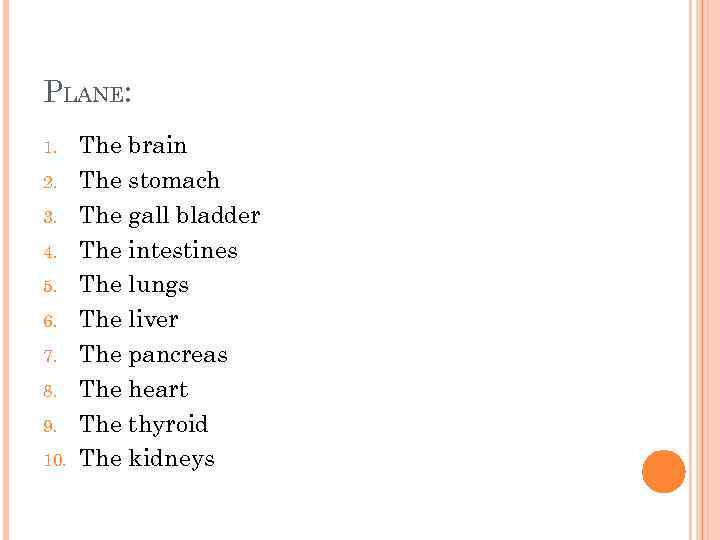 PLANE: 1. The brain 2. The stomach 3. The gall bladder 4. The intestines 5. The lungs 6. The liver 7. The pancreas 8. The heart 9. The thyroid 10. The kidneys
PLANE: 1. The brain 2. The stomach 3. The gall bladder 4. The intestines 5. The lungs 6. The liver 7. The pancreas 8. The heart 9. The thyroid 10. The kidneys
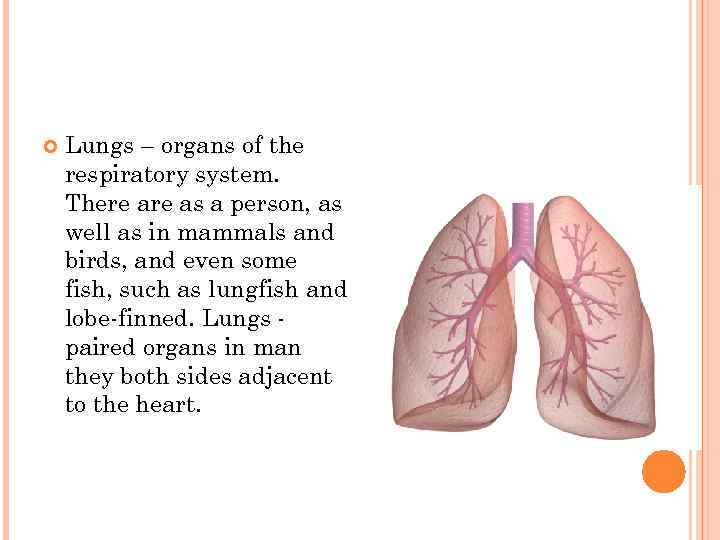 Lungs – organs of the respiratory system. There as a person, as well as in mammals and birds, and even some fish, such as lungfish and lobe-finned. Lungs - paired organs in man they both sides adjacent to the heart.
Lungs – organs of the respiratory system. There as a person, as well as in mammals and birds, and even some fish, such as lungfish and lobe-finned. Lungs - paired organs in man they both sides adjacent to the heart.
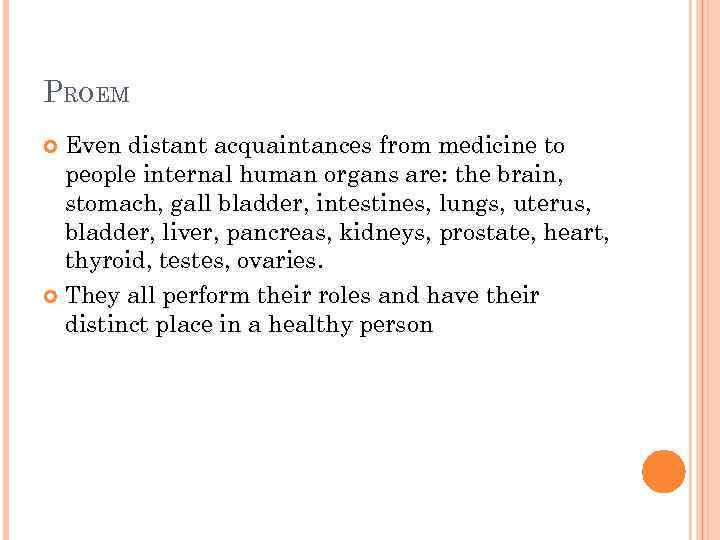 PROEM Even distant acquaintances from medicine to people internal human organs are: the brain, stomach, gall bladder, intestines, lungs, uterus, bladder, liver, pancreas, kidneys, prostate, heart, thyroid, testes, ovaries. They all perform their roles and have their distinct place in a healthy person
PROEM Even distant acquaintances from medicine to people internal human organs are: the brain, stomach, gall bladder, intestines, lungs, uterus, bladder, liver, pancreas, kidneys, prostate, heart, thyroid, testes, ovaries. They all perform their roles and have their distinct place in a healthy person
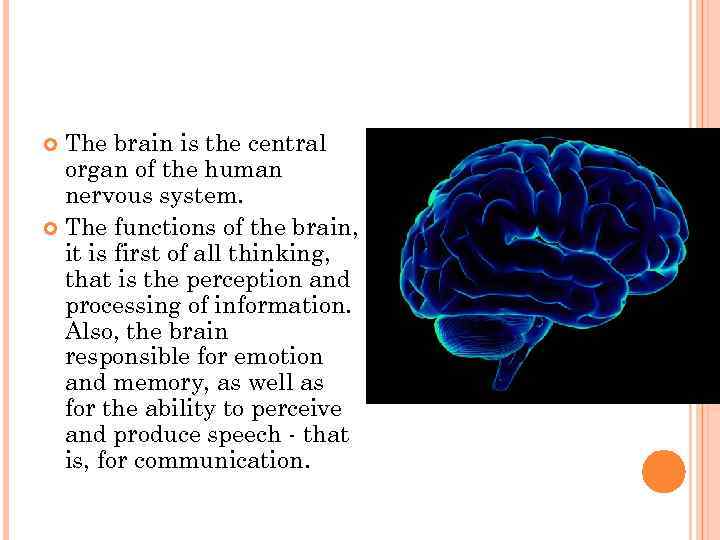 The brain is the central organ of the human nervous system. The functions of the brain, it is first of all thinking, that is the perception and processing of information. Also, the brain responsible for emotion and memory, as well as for the ability to perceive and produce speech - that is, for communication.
The brain is the central organ of the human nervous system. The functions of the brain, it is first of all thinking, that is the perception and processing of information. Also, the brain responsible for emotion and memory, as well as for the ability to perceive and produce speech - that is, for communication.
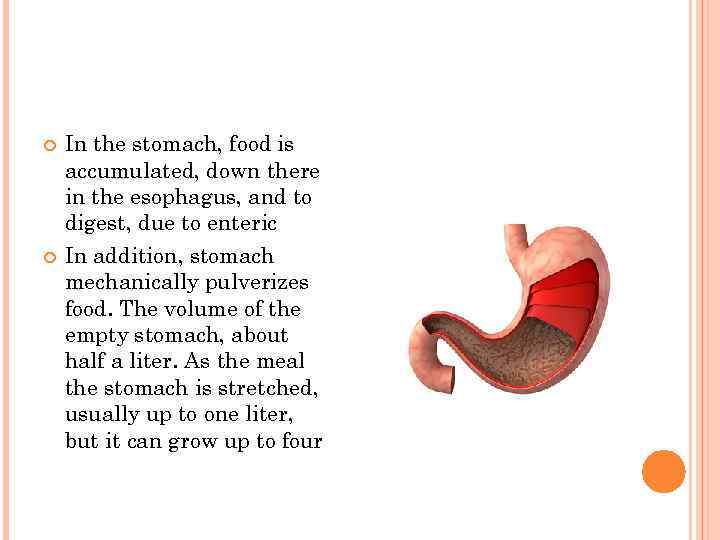 In the stomach, food is accumulated, down there in the esophagus, and to digest, due to enteric In addition, stomach mechanically pulverizes food. The volume of the empty stomach, about half a liter. As the meal the stomach is stretched, usually up to one liter, but it can grow up to four
In the stomach, food is accumulated, down there in the esophagus, and to digest, due to enteric In addition, stomach mechanically pulverizes food. The volume of the empty stomach, about half a liter. As the meal the stomach is stretched, usually up to one liter, but it can grow up to four
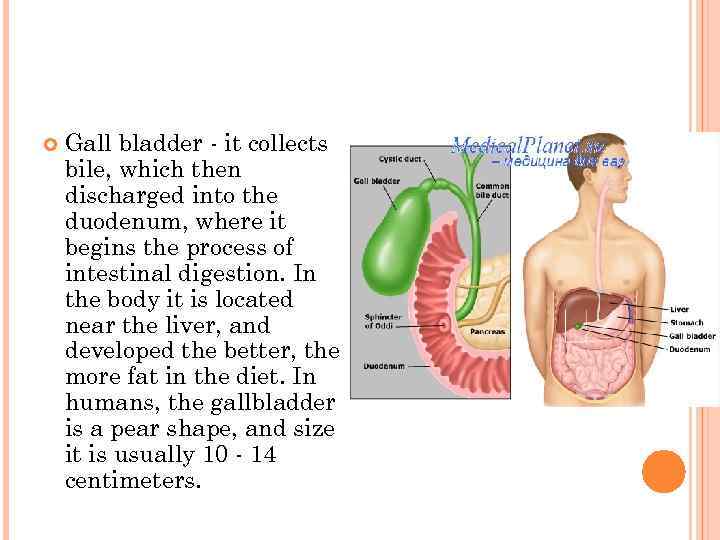 Gall bladder - it collects bile, which then discharged into the duodenum, where it begins the process of intestinal digestion. In the body it is located near the liver, and developed the better, the more fat in the diet. In humans, the gallbladder is a pear shape, and size it is usually 10 - 14 centimeters.
Gall bladder - it collects bile, which then discharged into the duodenum, where it begins the process of intestinal digestion. In the body it is located near the liver, and developed the better, the more fat in the diet. In humans, the gallbladder is a pear shape, and size it is usually 10 - 14 centimeters.
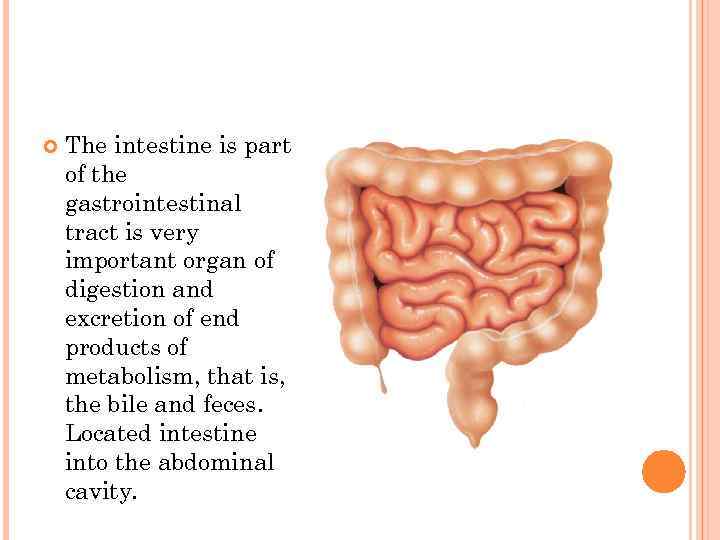 The intestine is part of the gastrointestinal tract is very important organ of digestion and excretion of end products of metabolism, that is, the bile and feces. Located intestine into the abdominal cavity.
The intestine is part of the gastrointestinal tract is very important organ of digestion and excretion of end products of metabolism, that is, the bile and feces. Located intestine into the abdominal cavity.
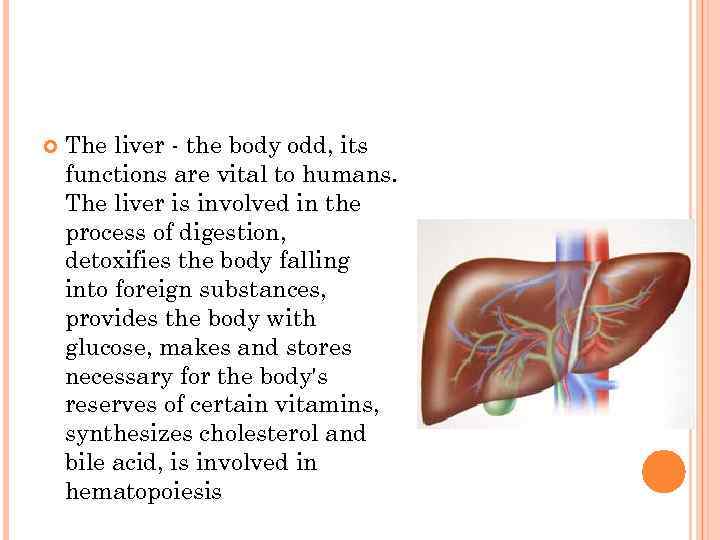 The liver - the body odd, its functions are vital to humans. The liver is involved in the process of digestion, detoxifies the body falling into foreign substances, provides the body with glucose, makes and stores necessary for the body's reserves of certain vitamins, synthesizes cholesterol and bile acid, is involved in hematopoiesis
The liver - the body odd, its functions are vital to humans. The liver is involved in the process of digestion, detoxifies the body falling into foreign substances, provides the body with glucose, makes and stores necessary for the body's reserves of certain vitamins, synthesizes cholesterol and bile acid, is involved in hematopoiesis
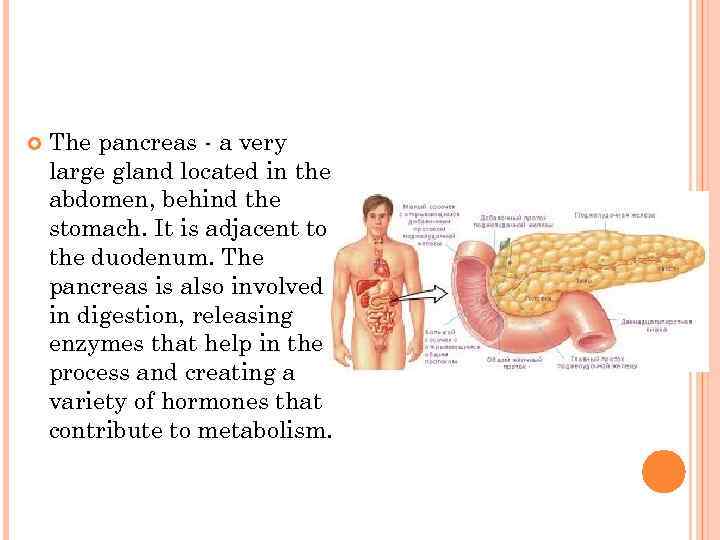 The pancreas - a very large gland located in the abdomen, behind the stomach. It is adjacent to the duodenum. The pancreas is also involved in digestion, releasing enzymes that help in the process and creating a variety of hormones that contribute to metabolism.
The pancreas - a very large gland located in the abdomen, behind the stomach. It is adjacent to the duodenum. The pancreas is also involved in digestion, releasing enzymes that help in the process and creating a variety of hormones that contribute to metabolism.
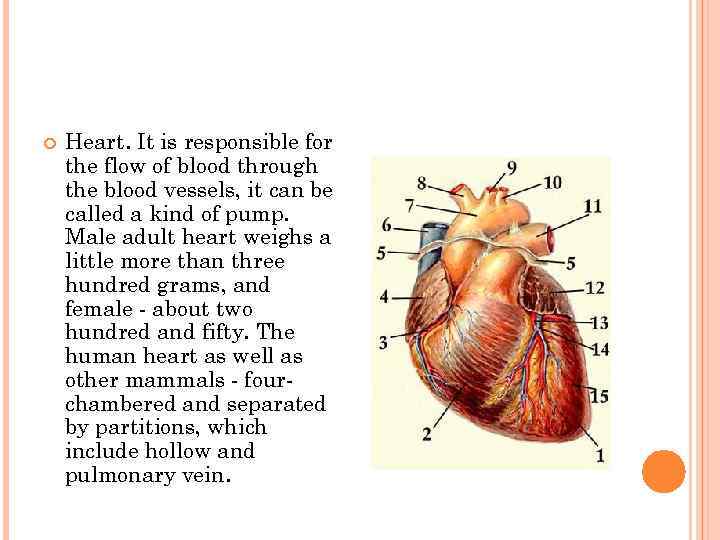 Heart. It is responsible for the flow of blood through the blood vessels, it can be called a kind of pump. Male adult heart weighs a little more than three hundred grams, and female - about two hundred and fifty. The human heart as well as other mammals - four- chambered and separated by partitions, which include hollow and pulmonary vein.
Heart. It is responsible for the flow of blood through the blood vessels, it can be called a kind of pump. Male adult heart weighs a little more than three hundred grams, and female - about two hundred and fifty. The human heart as well as other mammals - four- chambered and separated by partitions, which include hollow and pulmonary vein.
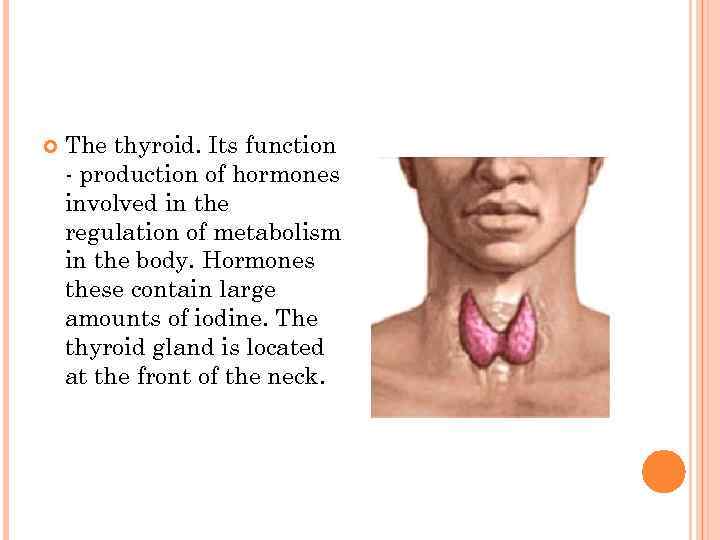 The thyroid. Its function - production of hormones involved in the regulation of metabolism in the body. Hormones these contain large amounts of iodine. The thyroid gland is located at the front of the neck.
The thyroid. Its function - production of hormones involved in the regulation of metabolism in the body. Hormones these contain large amounts of iodine. The thyroid gland is located at the front of the neck.
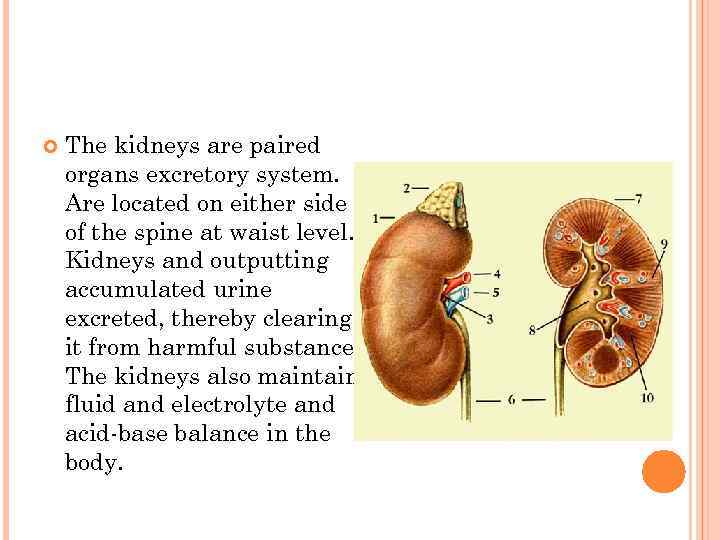 The kidneys are paired organs excretory system. Are located on either side of the spine at waist level. Kidneys and outputting accumulated urine excreted, thereby clearing it from harmful substances. The kidneys also maintain fluid and electrolyte and acid-base balance in the body.
The kidneys are paired organs excretory system. Are located on either side of the spine at waist level. Kidneys and outputting accumulated urine excreted, thereby clearing it from harmful substances. The kidneys also maintain fluid and electrolyte and acid-base balance in the body.
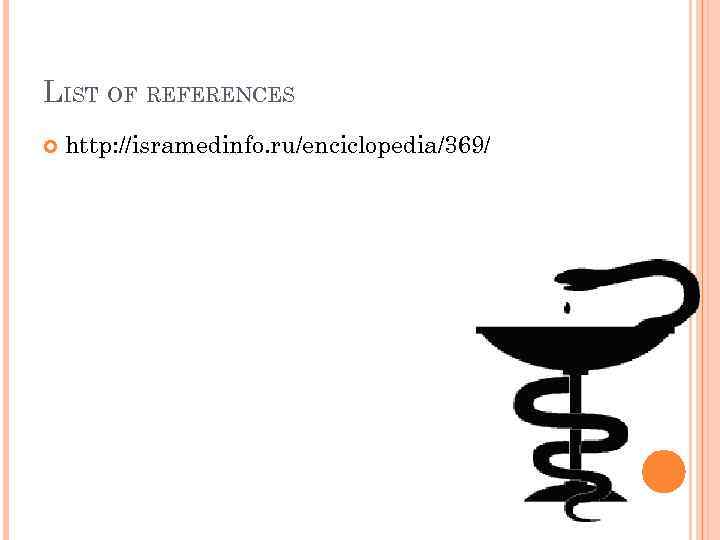 LIST OF REFERENCES http: //isramedinfo. ru/enciclopedia/369/
LIST OF REFERENCES http: //isramedinfo. ru/enciclopedia/369/



























